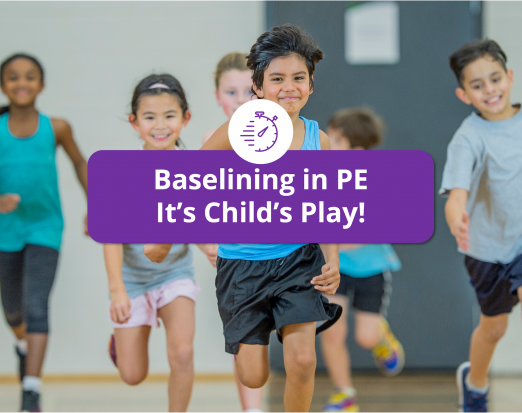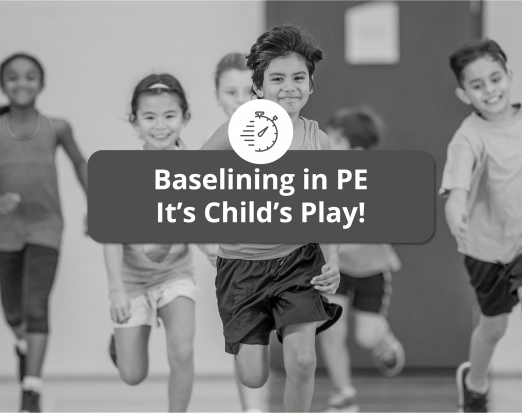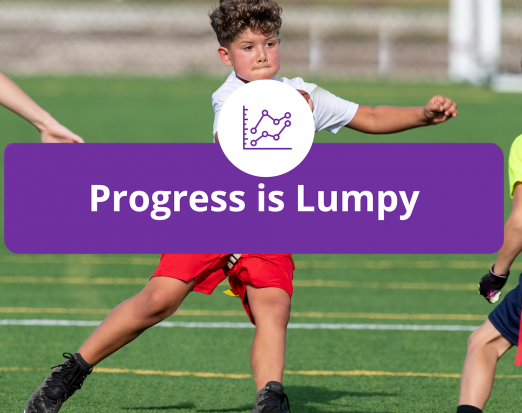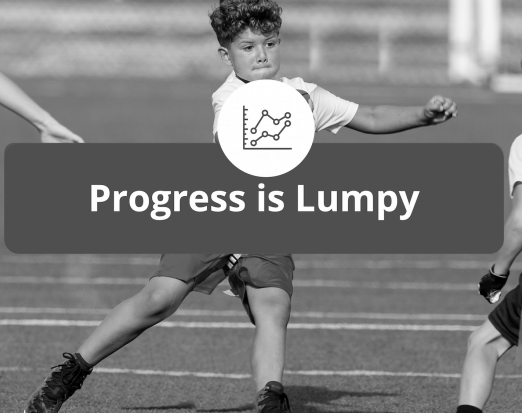Moved By Maths - 13 ACTIVE Ways to Teach Number Skills

According to one of the most extensive studies on active learning ever conducted, short bursts of physical activity in lessons can increase pupils' fact retention. There are many reasons for this, but the most compelling is the fact movement accelerates the flow of oxygen to the brain. Contrary to centuries of belief that stillness equals focus, it seems the human body enters a sort of 'standby' mode after prolonged sitting. To maximise its potential for learning, it needs to be active.
When children move, their cells get flooded with oxygen. They are more alert, give faster responses and find it easier to engage with challenging concepts. This is particularly evident in maths lessons which require critical thinking and the ability to grasp abstract ideas. It's why child development experts strongly recommend teachers use dynamic activities to teach number skills.
Try these active math games to give your pupils a burst of inspiration and show them numbers can be lots of fun!
1.Simon Says 'Spin!'
How to Play: Put a twist on the traditional game of Simon Says by having pupils respond to directional instructions. Use 'full turn,' 'half turn' and 'quarter turn' to test children's knowledge of basic geometry. If they're confident with this, introduce the words 'clockwise' and anti-clockwise.' Increase the pace of your commands when as children get better at this.
Progression: Older children (KS2 and KS3) may be able to play this game with basic angles such as 90°, 180° and 360°. If your pupils need help, display pictures of these angles so they can use their knowledge of full turns, half turns and quarter turns to figure out the instructions.
2. Hot Potato - Maths Edition!
How to Play: Ask your pupils to stand in a circle. Then, propose a maths question with multiple answers. For example, you might ask pupils to recite the two times table. Or you could ask them to name geometric shapes. Start the game by giving one child a softball or any easily passable object. As soon as he/she passes the ball to the next person in line, the 'clock' starts ticking. This child must provide an answer to the question before the ball makes it all the way around the circle and back to them. When the answer is given, the 'clock' stops. The child holding the ball must now pass the object to restart it and give an answer before it comes back to them.
Progression: Make this game more challenging by requiring pupils to catch and throw the ball. Every time the 'clock' restarts, reverse the direction of play. You could even add a second ball and have two children trying to beat the 'clock' at the same time.
3. Catch It, Count It
How to Play: Use a permanent marker or stickers to write numbers across the surface of a beach ball. Throw the ball to a pupil and ask them to shout out the number their right thumb is touching. They must then throw it to another pupil who repeats the process. However, they must also add their number to the first. Repeat until all of the children have taken a turn or, for a greater challenge, play for five minutes. Continue for five minutes and record the sum. Each time you play the game, add the sum to a graph.
Progression: Every time your class finishes the game, ask them to add the day's total to a week long graph. On which day did you reach the highest number? What about the lowest number? Is there any reason for this or are the numbers random? Could you do anything to influence the total?
4. Student Vote
How to Play: Ask your class an interesting question with multiple potential answers (for example, what is your favourite colour?) Invite pupils to 'vote' by placing a straw in one of several plastic cups, each labelled with one of the answers. The children should then count the votes, record the results and turn them into a pie chart.
Progression: Add even more activity to your lesson on proportions by splitting pupils into pairs - with one counting and one competing. The question: how many lunges can you do in 30secs? Once all the results are in, your pupils can work on turning them into graphs.
5. Messy Maths
How to Play: If you don't mind getting a little messy, use shaving cream to create a 'whiteboard' on pupils' desks. Each child should have enough space (and cream) to solve your maths questions by finger writing them on the desk. This is a great way to get younger pupils excited about counting!
Progression: Ask each pupil to 'reset' their desk (by wiping away the previous answers). They should then write a maths problem on their desk. Instruct each child to move to a different desk or allocate them a desk. They must solve the maths problem on the new desk. Don't forget to check the answers before starting another round.
6. High Rollers
How to Play: Divide pupils into pairs. Give each pair a regular six sided die and two pieces of paper. On their respective pieces of paper, they should draw four squares for the digits they're about to roll. Before playing, decide if the highest or lowest number will win the game (you can alternate between rounds). The pupils take turns rolling the die and filling in the blank squares in any order they choose. Once a number is written, it cannot be changed! The rolling continues until both children have filled their squares. When finished, compare the numbers. If time permits, have students subtract to find the difference between their numbers.
Progression: Set the pairs some challenges to complete with their numbers. Can they add them together? Can they subtract them to find the difference between the two?
7. Shifting Shapes
How to Play: Ask pupils to explore different ways to create and represent shapes. For instance, they could lie on the floor to make a triangle. Or they could use yarn to create a square shape on their desktop. Can they find examples of these shapes in the classroom?
Progression: Give each pupil several pieces of square paper. From their squares, they must form a triangle, a rectangle and a circle. They can draw on the paper but, the rule is they can only draw ONE line. They need to form their shapes using one continuous line on the paper (no lifting and replacing the pen). Encourage your pupils to pause and really think about their strategies. Once decided, they can use folds (no scissors) or cuts (with safety scissors) to create the shape.
8. Listen to the Leader
How to Play: This activity is best played in the playground or school gym where there's lots of space. Divide your pupils into small teams or pairs. One child from each team will be the Listener, the other(s) will act as the Leader. The Leader must direct the Listener along a prespecified route across the space and back to the rest of the group. However, they may only use turn based directions - 90°, 180°, 360°, clockwise, anti-clockwise.
Progression: If you're confident in the safety of the space and your pupils' movement skills, introduce some obstacles to the route or - for a serious challenge - blindfold the Listener.
9. Card Sharks
How to Play: Divide your pupils into pairs. Give each pair a deck of cards. Just like in any card game, each card corresponds to a number (2 through to 10, leave out the picture cards). Playing in pairs, each pupil takes two cards from the deck and lays them face up. They must subtract the lower number from the higher number. The pupil with the highest number wins and gets to keep all four cards. If the totals end up the same, the players take two more cards. Repeat until all the cards have been won.
Progression: If your pupils are confident with using and recognising the cards, bring back the ace, jack, queen and king. This should make the game a little trickier because it re-introduces some larger numbers.
10. One Meter Challenge
How to Play: Split your pupils into small groups of 3-4. Give each group a metre stick, a pencil and a piece of paper. Children get two minutes to look around the classroom and write down three items they think will add up to a metre in length (in total). They must not touch or handle the items before the teacher says it's allowed. On the call of 'Go,' they have five minutes to measure their three items, record the lengths (in cms) and add up the total. The group that comes closest to one metre wins.
Progression: Using their measuring stick as a guide, can your pupils find objects that are half a metre, a quarter of a metre, and three quarters of a metre?
11. Weighing In
How to Play: Arrange a variety of fruits and vegetables in your classroom - oranges, bananas, potatoes, grapes, tomatoes, etc. Ask pupils to write the names of the foods in order of weight, from lightest to heaviest. Then, use a small scale to weigh each item and reveal its actual density. Once finished, ask the children to rearrange the foods in the correct order.
Progression: Carefully cut each fruit or vegetable into two pieces. Ask your pupils to look inside and make notes about what they see. How do they think the inside of a fruit or vegetable affects its weight? What do the lightest items look like inside? Are they different from the heavier foods?
12. Round 'Em Up
How to Play: There are lots of playground games you can use to reinforce number skills. For instance, one activity is to get your pupils to run around in a large space and shout out various numbers. This might be the number of people you want them to get into a group with or the number of arms and legs you want in a group.
Progression: Extend this for skilled pupils by using challenging commands like 'get into a multiple of three' or even 'get into a squared number.'
13. Twister Math
How to Play: Attach labels with the names of numbers to a Twister mat. Each pupil who plays is given a number and must create it on the mat by placing their hands and feet in the correct spots. For this to work, you'll need several mats or you'll need to split pupils into teams and have a new team play each round.
Progression: Label the Twister mat only with numbers ending in zero. This time, the pupils have to identify the right sum to create the number called by the teacher. Then, they've got to round it up or down to the nearest zero-ending number on the mat.





